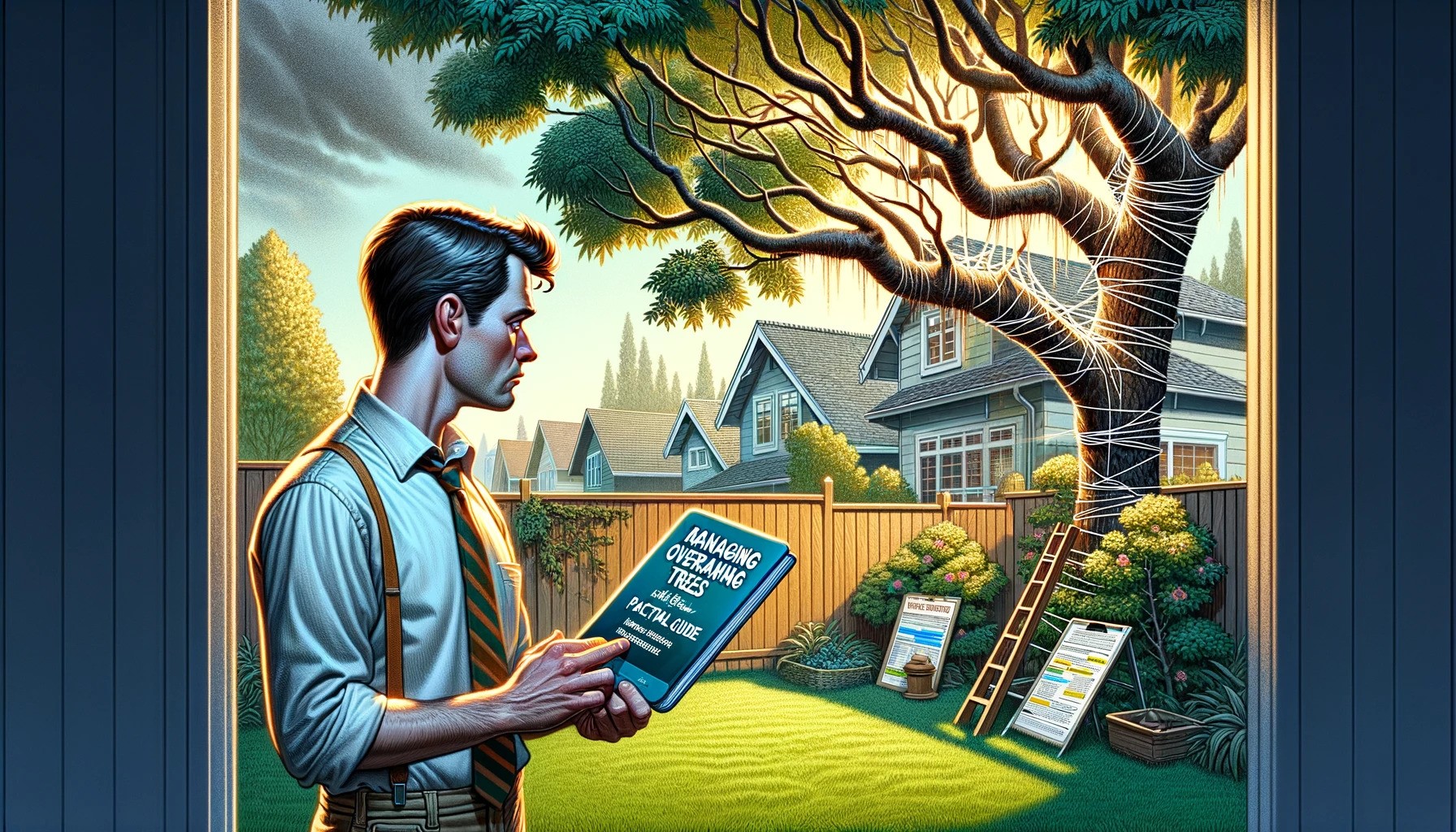
Lorem ipsum dolor sit amet, consectetur adipiscing elit. Nulla iaculis molestie nunc, ut mattis tellus blandit vitae. Pellentesque cursus enim eu erat maximus, sed elementum urna gravida.
Sound like a good plan?
Let’s dive into it.
Understanding Your Rights with Overhanging Trees in NSW
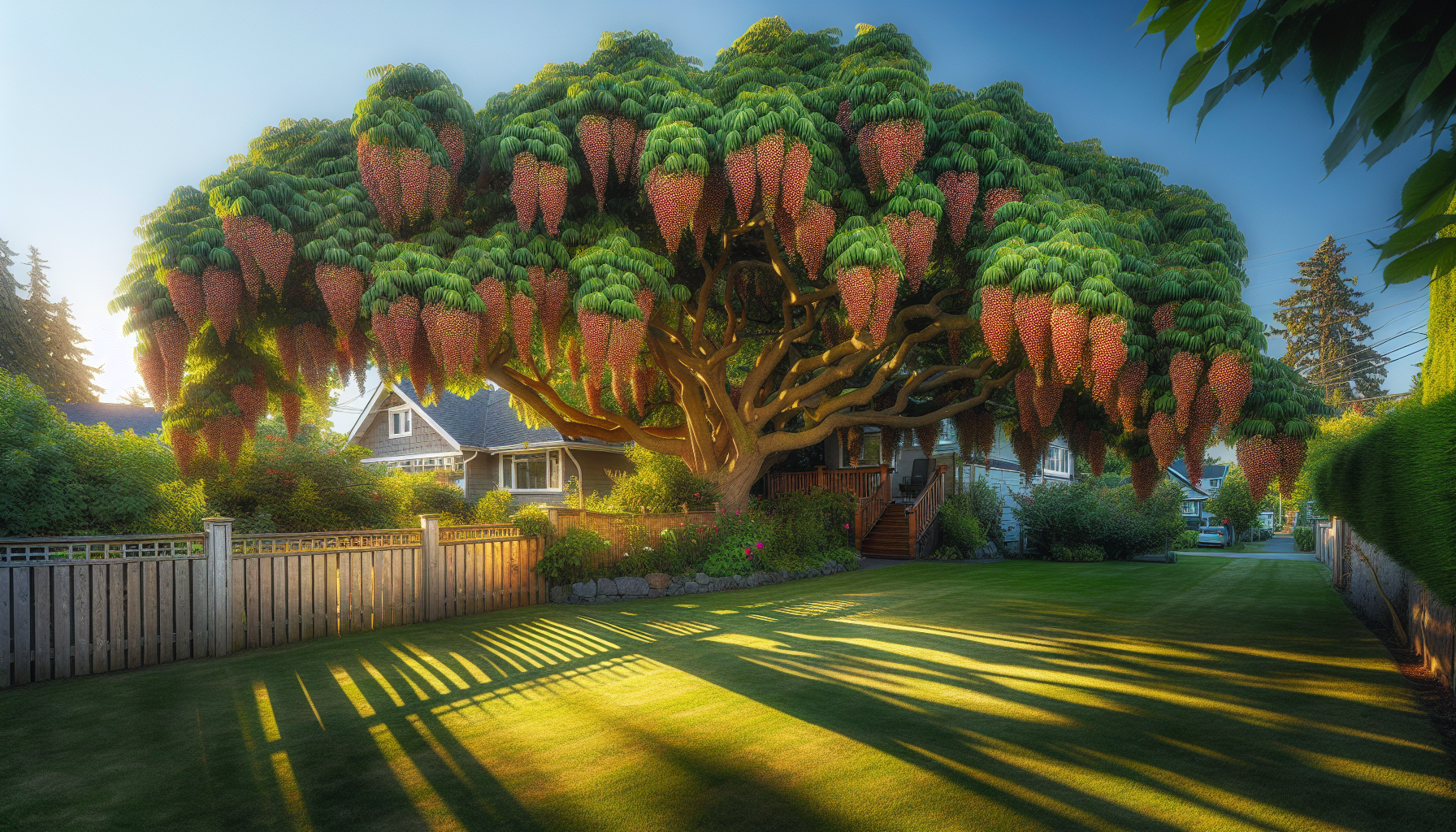
Okay, so let’s take a look at your rights. In New South Wales, you’re entitled to cut leaves, branches, or roots that overhang your property boundary line as long as the tree is not protected and you’ve obtained the necessary permits from the local council. The tree owner is only obliged to maintain their trees if they’re causing a nuisance or are deemed to be a hazard. This means that you (as the affected neighbour), might have to take matters into your own hands if the tree is bothering you.
As mentioned previously, The Act (2006) governs the legalities surrounding overhanging trees and related disputes in NSW This Act is designed to help prevent disputes from escalating and ensures that issues are resolved in a fair and just manner. For the purpose of this guide, we’re going to delve deeper into your rights concerning overhanging trees and how you can navigate through the maze of tree dispute laws.
When Can You Trim Overhanging Branches?
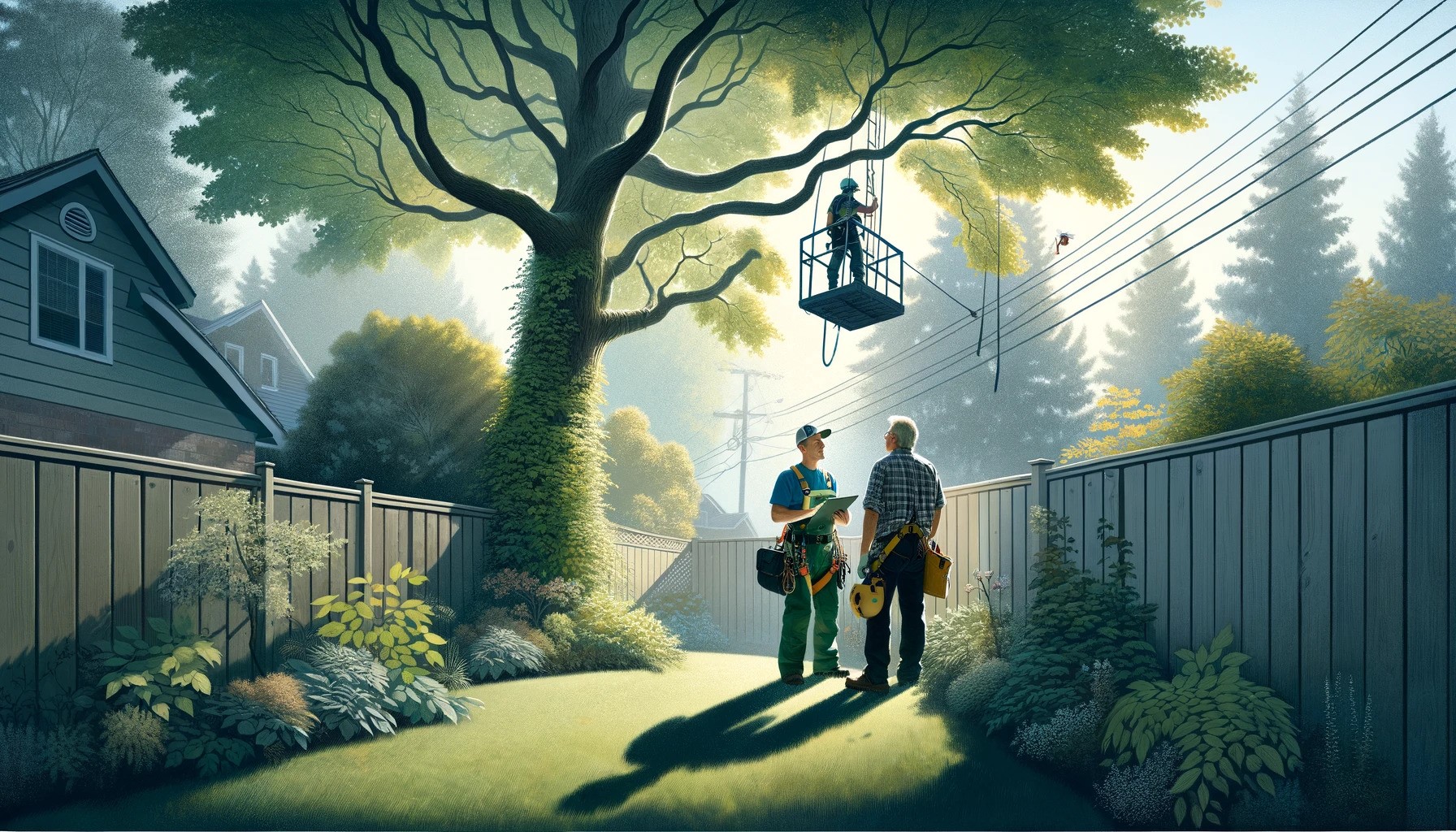
You can trim overhanging branches right back to your property line without needing to ask anyone for permission—under a few conditions, of course.
But here’s a pro tip from us: when it comes to giving those trees a trim it’s best to leave it to the professionals.
It’s not just about keeping the tree happy and healthy; it’s about making sure you’re not putting yourself or your neighbours at risk. Bear in mind that if you’re pruning purely for aesthetic reasons then legally your neighbour may not be responsible for the cost.
No, matter what, It’s always a good move to have a quick chat with your neighbour before you bring in the big guns and start chopping away. It keeps things friendly and avoids those awkward fence disputes. So, whether you’re looking to let a little more light into your garden or just trying to keep your yard looking sharp then remember that a little neighbourly conversation goes a long way.
What Constitutes Illegal Tree Damaging?

While you might feel tempted to pick up a saw and start cutting the tree yourself, let’s hit pause for a second. It’s really important to know that trimming or removing branches from a neighbour’s tree without appropriate care or permission could land you in a world of trouble and make you liable for any damage caused to the tree.
If you illegally damage a neighbour’s tree then you may be subject to an order for compensation due to the obstruction or harm inflicted on the tree.
And let’s not even talk about going rogue without the right permits or consent as those fines are no joke. They can range up to half a million dollars for individuals and a staggering $ 2 million for businesses. So, it’s always safer (and wiser) to seek professional advice before you start swinging a chainsaw around.
Navigating Tree Dispute Laws in NSW

A proper understanding of the Trees Act 2006 and the role of the Land and Environment Court can go a long way in resolving disputes amicably.
The Trees Act provides a legal framework for resolving neighbourly tree disputes in NSW concerning trees on their properties.
So let’s take a look at this Act in more detail…
The Trees Disputes Between Neighbours Act 2006

Before bringing a case to the Land and Environment Court under the Trees Act 2006, you must follow these steps:
- Make reasonable efforts to resolve the dispute with your neighbour.
- Give proper notice of the application as stipulated by the Act.
- Remember that the Act classifies a tree as any woody perennial plant or any plant that resembles a tree in form and size.
- Understand that actions like cutting down, poisoning, or burning are considered forms of interference.
Here’s the lowdown on sorting out your tree dramas. If your neighbour’s tree is hogging all the sunlight or messing with (obstructing) your view and it’s towering over at least 2.5 metres, then you’ve got a case. The Land and Environment Court can step in to issue orders and tell your neighbour to trim those sky-high branches if they’re causing significant damage or looking a bit unhealthy or risky.
Role of the Land and Environment Court
If your tree troubles have escalated and a neighbourly chat doesn’t cut it – especially when the tree is deemed dangerous, is causing damage, or is an obstruction – then the Land and Environment Court steps in as your go-to. This is all under the Trees Act 2006 and makes this court your alley when things need sorting.
The Court has the authority to make calls like telling your neighbour to remove a tree, trim back overhanging branches or cough up payment for damage that’s been caused by their tree. Or they can get some roof barriers installed to keep things civil and address issues caused by trees on adjoining land. Before they make a decision, the court will consider a wide range of factors like; the tree’s contribution to the local ecosystem, the impact on the applicant’s property, the location of the tree, its impact on natural features, and what has already been tried to prevent or rectify damage.
Initiating a Tree or Hedge Dispute Resolution

Having a dispute with a neighbour over a tree or hedge is never a pleasant situation. However, knowing how to properly initiate a dispute resolution process can make things so much easier. The process involves a series of steps, including:
- Making a reasonable effort to reach an agreement with your neighbour
- Seeking mediation services if necessary
- As a last resort, applying to the NSW Civil & Administrative Tribunal.
This might feel daunting, but bear in mind that the objective is to amicably resolve the issue while preserving a good relationship with your neighbour.
So, let’s break down these steps and understand how you can initiate a tree or hedge dispute resolution.
Step #1 – Making a Reasonable Effort to Reach Agreement
The first step in resolving a tree or hedge dispute is to communicate directly with your neighbour. It’s advisable to discuss the issue and attempt to reach a mutual agreement on who’s responsible for what. This could be as simple as agreeing on a time to prune the branches or sharing the cost of hiring a professional arborist.
If conversations do not yield a resolution, you can take the following steps:
- Send a letter of demand which details the issue, proposes a solution, and stipulates a time frame for the neighbour’s response.
- Follow up with a written notice if needed. If you want to take this step even further, send the letter by registered mail so you’ve got proof you sent the letter.
- Keep detailed records of all interactions with your neighbour and create a diary that includes dates and responses. This could serve as evidence in any legal proceedings.
Seeking Mediation Services

If direct communication doesn’t work then don’t worry. There are mediation services available in NSW that can help before you have to take things to court. Community Justice Centres, for example, provide free mediation services to resolve tree disputes amicably.
Mediators are like neutral friends who help you and the person you’re not seeing eye to eye with find common ground. They’re there to guide the conversation, not to tell you who’s right or wrong or give you legal lectures.
Opting for mediation instead of dragging each other to court is not only easier on your wallet but also keeps things friendly. And the cherry on top? Whatever you guys agree on can be put down in writing and can be just as binding as a court order, without all the drama.
Applying to the NSW Civil & Administrative Tribunal
If all else fails, you can apply to the Tribunal for resolution.
However, bear in mind that this step should only be undertaken when a tree or hedge dispute pertains to a dividing fence.
After applying, you are required to:
- Serve the application to the owner or occupier of the adjacent property
- Serve the application to the local council
- Serve the application to the Heritage Council
Make sure that everyone gets a heads-up at least 21 days before you’re due in the preliminary hearing. It might sound like a lot (because it is) and while the process can seem intimidating, it’s all about giving everyone a fair chance to present their case and reach a resolution.
Financial Responsibilities in Tree Pruning and Removal
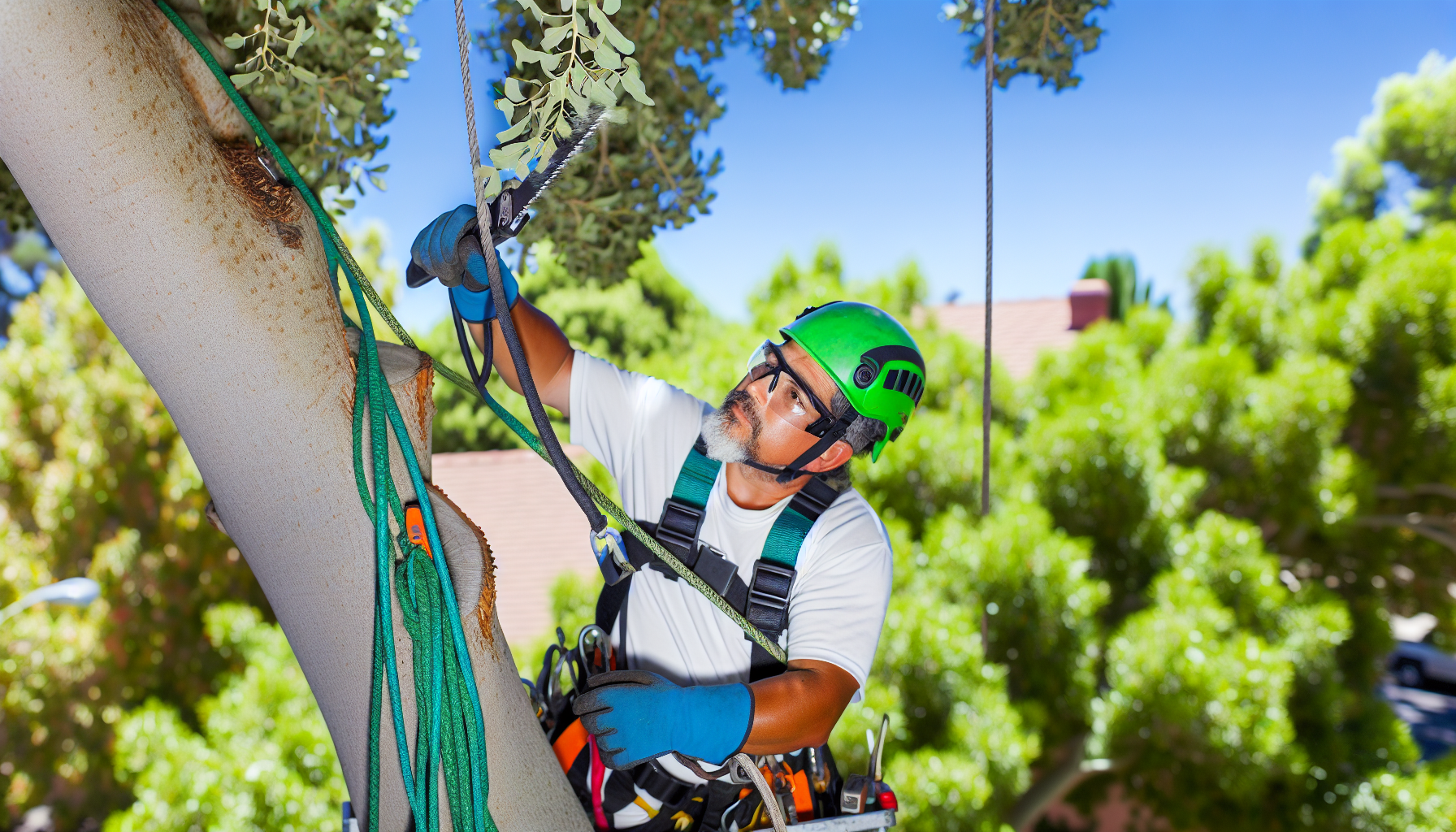
In the world of neighbour tree disputes in NSW, figuring out who’s picking up the tab and bearing financial responsibility for the work to be done. In NSW, the cost of tree maintenance, pruning or removal usually lands on the person who wants to get the work done on a neighbour’s tree. But, as with anything, there are exceptions, and sometimes who has to foot the bill gets a bit more complicated.
So… Who Bears the Cost of Tree Maintenance?

In most cases, tree owners are not required to maintain their trees unless the tree is causing a nuisance or presents a hazard to another person or property. This means that if you’re the one who wants to prune the overhanging branches of your neighbour’s tree for aesthetic reasons then you will likely have to shoulder the cost.
If you and your neighbour are both dealing with the headache of a tree wreaking havoc on your properties, the cost to get rid of it might just be a team effort. And if the tree’s kicked the bucket (is a dead tree), then the owner usually has to cover the removal costs although your insurance might step in if the tree was a known danger or taken down for health reasons.

Dealing with Fallen Branches and Debris
Dealing with fallen branches and debris from your neighbour’s tree can be a nuisance. But did you know that legally you can send that green waste back over the fence to where it came from? It’s one way to handle the green waste that doesn’t involve you having to pay for disposal.
As for getting rid of tree waste we recommend hitting up your local landfill, transfer station, or green waste spot – that’s probably your best bet. Or, you could get crafty and turn that waste into mulch or firewood, just make sure to check what your local council says about it first as council restrictions on disposal methods should be observed.
Safeguarding Against Property Damage from Neighbour’s Trees
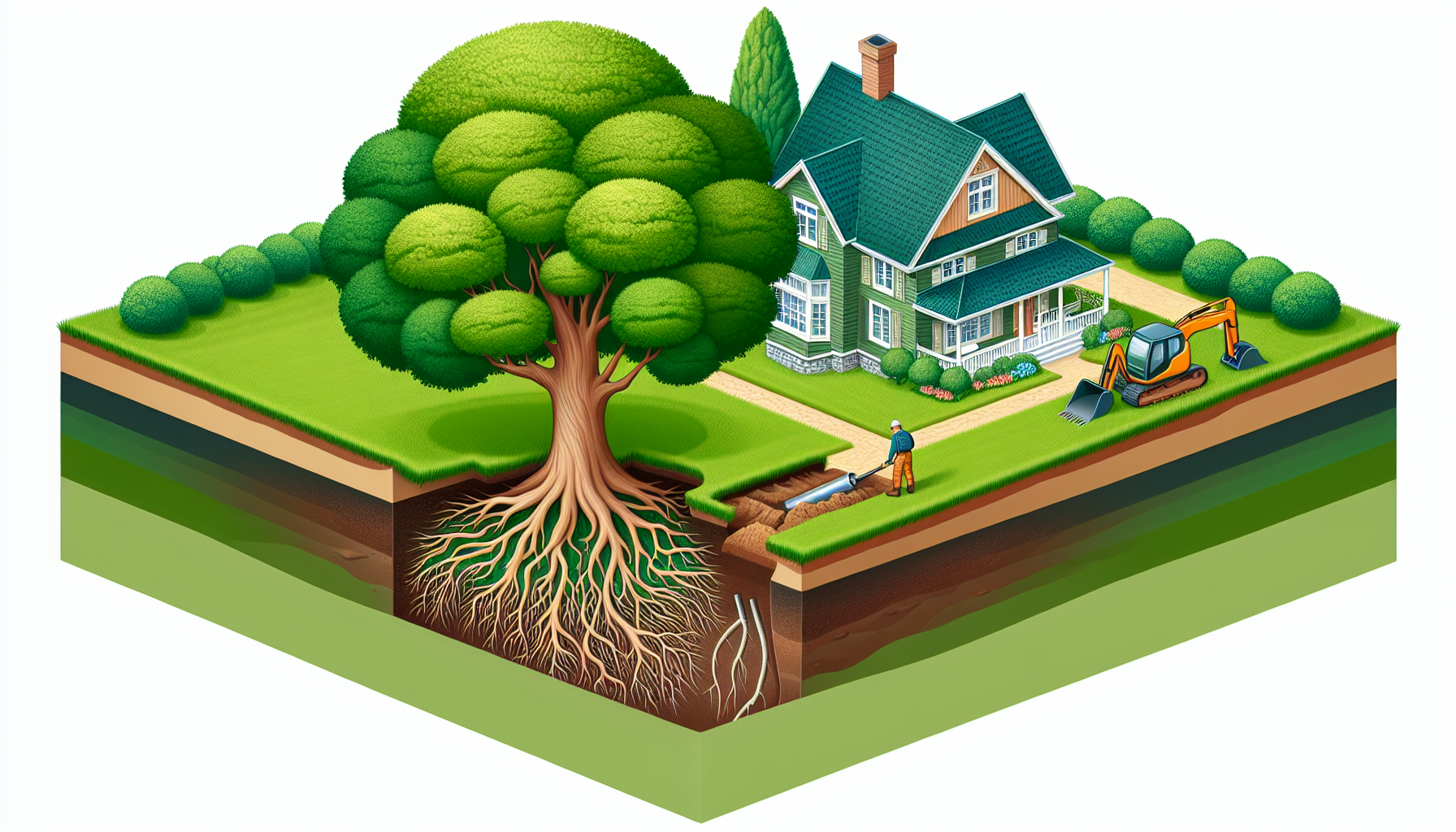
Keeping your property safe from the neighbour’s trees means staying one step ahead. Regular check-ups on those leafy giants and ongoing tree maintenance can spot trouble before it crashes onto your lawn.
Sometimes, though, you’ve got to up your game:
- Installing root barriers to keep underground invaders at bay.
- Consulting with a tree whisperer (a.k.a. a certified arborist) for the inside scoop on how to manage risks.
- And yes, sometimes, lawyering up.
Preventing Damage from Tree Roots
Tree roots sneaking into foundations or plumbing can be a nightmare. Root barriers are your best friends here as they can block off future root invasions prevent future growth and protect your property from potential damage.
Picking the right tree species from the get-go is crucial too. Make sure you say no to the likes of Weeping Willows or Eucalyptus if you want to avoid a root rampage as these can cause property damage. Cutting roots can be a last resort solution to mitigate damage, and it’s typically recommended to do this when the roots are over 5 metres away from the tree trunk to prevent harm to the tree.
Mitigating Risks from Falling Branches
Overhanging branches aren’t just an eyesore – they’re a lawsuit waiting to happen if they decide to take a dive.
Setting up some defence mechanisms can help you mitigate risks and save you a lot of grief (and cash):
- Nets or screens to catch falling debris
- Shields of metal or plastic to deflect direct hits
- Tree guards or wraps for a softer touch
- Canopies or awnings for stylish protection
Navigating the blame game after branch-induced damage can be a legal labyrinth, especially when Mother Nature goes wild. Best bet? Have a heart-to-heart with your neighbor now to avoid a headache later.
Applying for a Tree Removal Permit

There comes a time when saying goodbye to that tree is the only way to keep the peace and protect your property. But before you call in the tree removal squad, remember, that chopping down a tree in Newcastle isn’t just a spur-of-the-moment decision. You’ll need a permit from the council unless the tree’s species or condition gives it a free pass.
Navigating the permit process can feel like a marathon, but it’s all about looking after our leafy friends responsibly. Let’s break down how to figure out if your tree is on the protected list and the steps to snag that all-important council permit.
Identifying Protected Trees
First off, make sure the tree you’re eyeing isn’t under protection. In NSW, certain trees get VIP status based on local council rules—think Tree Preservation Orders (TPOs) and Local Environment Plans (LEPs). Trees like the Camphor Laurel or Coral Tree often get this special treatment.
Messing with a protected tree without permission can hit your wallet hard, so getting expert advice before you wield the pruning shears or apply for a removal permit is a smart move.
Steps to Obtain a Council Permit
Once you’ve confirmed your tree isn’t protected (or that you indeed need a permit for the job), it’s time to dive into the application process. If you need more information on getting a permit from Newcastle council then visit their website.
Summary

Navigating neighbour’s trees and related disputes can be a complex and not so fun process. However, by understanding your rights, the legal framework, and the steps to take, you can effectively manage any issues with overhanging trees in NSW. Remember, communication with your neighbour is the key to resolving disputes amicably.
Next time you’re navigating the jungle of overhanging branches, invasive tree roots, or a yard full of fallen debris, keep this guide in your back pocket. You’re now equipped with the know-how to tackle tree and hedge issues the right way—legally and with respect. This isn’t just about keeping the peace in the neighbourhood; it’s about ensuring the trees stay healthy and the vibes stay good between you and your neighbours.
Frequently Asked Questions
Who is responsible for cutting overhanging tree branches in Australia?
You are responsible for cutting overhanging tree branches in Australia if the tree is growing on your property. According to the Neighbourhood Disputes Resolution Act 2011, the owner of the land where the tree is growing is considered the “tree keeper.” Therefore, it is your responsibility to trim the overhanging branches or hire someone to do it for you.
Can my Neighbour cut my tree without asking in NSW?
In NSW, the Tree Disputes Between Neighbours Act 2006 requires you to obtain consent from your neighbour before cutting their overhanging trees, unless they do not require a permit from the council. Always make sure to seek permission before taking action.
Who owns a tree on the property line NSW?
Both property owners are considered joint owners of the tree if it is situated on the boundary, and neither can remove or prune it without the other owner’s consent. Therefore, both owners have ownership of the tree.
How close can a tree be to a house in NSW?
You should follow the general rule, which in most cases suggests keeping trees at least 1-3 meters away from the house for safety reasons.
Who bears the cost of tree maintenance?
The person who wants to have work done on a neighbour’s tree usually bears the cost of tree maintenance.




